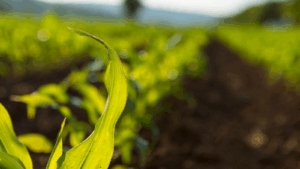Alternative Approaches to Sustainable Food Production
The interest in sustainable food production is driving alternative approaches to growing, fermenting, culturing, synthesizing food ingredients and end products. While it is a very active space for innovators, investors and corporates, the question of who will be successful and scale to a significant impact is far from clear.
I attended Future Food-Tech San Francisco last month where the focus was on moving ideas to scale. There are a couple of key takeaways that stood out for me:
- Clearly there is a supply-side push to create alternatives to animal-based proteins, with significant investment to support these directions.
- While cost is an issue, many innovators fall back on “scale,” which they say will address that barrier, or that nutritional value is a deciding factor.
- A different view that seems to point out the obvious is that customer experience is the only deciding factor.
- There is an increasing effort to join forces with the incumbents, since they have capital, channels, they understand end customers, and they have the potential to address policy when needed.
- Some of the companies that have received investment to date are sub-par, and maybe should not have received funding. This means that VCs are keeping powder dry and shifting to later-stage bigger bets instead of many smaller investments, concentrating on those that have a clear path to commercialization.
- Walmart, on one of the panels, pointed out that Hurricane Katrina was a pivot-point for them. Becoming a regenerative company is simply good business. At their scale, Walmart has its own brands, can mange their own emissions, and can focus the supply chain on solutions.
Focus is on Ingredients vs. End Products
Many of the innovators are ingredient-focused but end up having to create end products to demonstrate their innovation. One example is Triton Algae Innovations, who ferments a plant-based protein from red and green algae with a great protein profile – in a sustainable, cost effective plant. They have introduced the brand, Too Good To Be, that makes plant-based dumplings. Inside the green wrappers, the algae give the filling a plant-based alternative to pork.
MycoTechnology went in the other direction. They started out making an end product and pivoted to ingredients. The underlying technology involves growing mycelia in a liquid substrate. This occurs over several stages to produce specific enzymes. With over $220M of capital, the pivot seems to have the support needed for commercial success.
Customer Experience Will Be the End Determinant
If the goal is to replicate or replace current foods (while matching or improving nutritional profiles and improving sustainability), then it will take more than nice sauces to change the customer experience. Most consumers don’t read the labels.
One approach is the “meat plus” method, which is not a complete replacement of animal-based products but a blend. Mush Foods uses a combination of different types of mycelium and meat, and the kebabs were great. An Israeli-based startup with extensive R&D, they use food waste as input, the fibers absorb the meat flavor so no fillers are needed, and they grow fast in just 8-10 days — making the business scalable. They are planning on setting up their business on the U.S. east coast in the coming months.
Fungus and Fermentation: A Winning Combination?
Aqua Cultured Foods introduced a proprietary strain of fungi into the fermentation process to create a sushi-quality alternative to seafood – initially targeting scallops and tuna. Unlike other fermentation approaches that use bioreactor steel tanks, Aqua uses trays to grow a fibrous mass that can be sliced into end products. Eventually this can be grown in molds for specific shapes and sizes. With a new facility and recent funding of $5.5M, they will be able to produce up to 10,000 pounds per month.
Kynda is working on an in-house bioreactor for mycelium biomass fermentation that they plan to offer to companies for in-house production.
Molecular Farming: Putting Photosynthesis to Work — Plants Instead of Steel Bioreactors
The CEOs of Kyomei (Meir Wachs) and Forte Protein (Kathleen Hefferon) explained the approaches and benefits to molecular farming. The basic idea is growing regular plants and using them to express proteins, peptides, and small molecules used to replace animal proteins in foods and dairy.
Some of the advantages are using a replicating system that alters the genome, speed, and scalability, that ultimately results in lower price points. Forte explained that proteins are attached to a vector, sprayed on a plant leaf (grown in a greenhouse) and then harvested in a few days. Kyomei is addressing the customer experience by growing a heme iron protein in plants, the same protein that gives meat its flavor. Their approach is at the seed level vs. applications to plant leaves.
Final Thoughts
In summary, there is a lot to “chew over”. There are some areas, like precision fermentation, that have lots of potential, but with barriers. The conversation around precision fermentation went from revolutionary, to lots of churn in the market due to challenges of skilled labor, bottlenecks in permits, steel supply, and the cost of getting facilities built.
But the general consensus is there is a need for sustainable alternatives, and the main question is how we get there. This requires staying “in the flow” with early-stage companies, understanding barriers and paths to commercialization, collaborating with the incumbents, and understanding end consumer’s real purchasing decisions.



